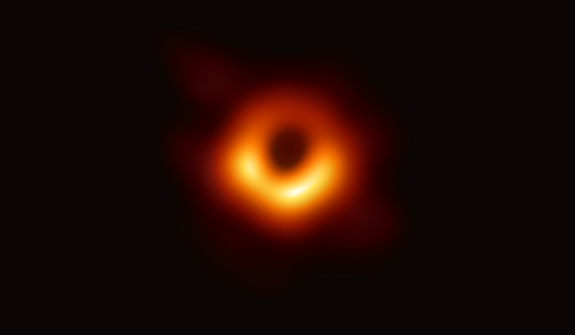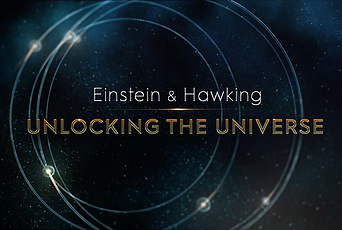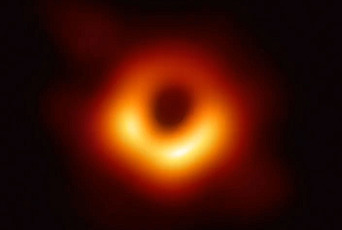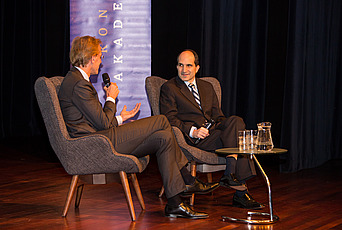The Black Hole Is the Atom of the 21st Century

Move over Brexit. For a brief moment on April 10, the attention in the European Commission’s headquarters in Brussels was not focused on Theresa May, but on the first photo of a black hole. As European Commissioner Carlos Moedas said during the presentation—one of five simultaneous announcements around the world—it is not often that someone is applauded during a press conference in that bureaucratic black hole, let alone gets a standing ovation. But that was exactly what happened to this cosmic heavyweight.
The iconic black hole image released by the Event Horizon Telescope collaboration has gone viral these days. The anticipation started days earlier. In the taxi ride to the airport, the driver questioned me intensely about the upcoming announcement. Suddenly, the whole world was focused on a bit of universal positive news. The cosmos must have chuckled, because black holes are the biggest bad boys among the celestial bodies. They easily devour millions, if not billions of stars. In fact, this specific black hole in the galaxy M87 is one of the most massive in our neighborhood of the universe. So, it was the blurry mugshot of a cosmic super villain that made us all feel so good.
It is difficult to overestimate the importance of this discovery. There is only one moment in human history when we will have seen a black hole for the first time. And that moment is April 10, 2019. We are getting spoiled, because this decade has already produced a number of such “five-star discoveries,” such as the detection of the Higgs particle in 2012 and the first direct observation of gravitational waves announced in 2016.
It is amazing that these discoveries that touch all of us so closely, are so far removed from everyday experience. This particular black hole is at a distance of 55 million light-years—so we gaze in wonder at an image from the time just after the extinction of the dinosaurs. The gravitational waves were the distant sounds of a huge collision that was 1.5 billion light-years away. And to find the Higgs particle we had to travel equally far into the interior of an atom.
These three spectacular discoveries have something else in common. They all started with a simple idea in the minds of a few visionary scholars and required many generations of technological innovations and worldwide collaborations to ultimately be measured. That grand intellectual adventure appeals to the general public. But why are scientists so enthusiastic? There are at least three reasons that make the black hole photo so special.
First of all, it confirms, again, Einstein’s theory of relativity. In a wonderful cosmic coincidence, this announcement came almost exactly a hundred years after the first experimental verification of his theory, the measurement of the sun’s deflection of stellar light during the solar eclipse of May 29, 1919—an event that launched Einstein as the first modern scientific celebrity.
Secondly, through these measurements, we learn much more about the formation of black holes and their role in the history of the cosmos. In recent years, black holes have made the transition from theoretical textbooks and science fiction movies to central characters in modern astronomy.
But perhaps the most important reason for all this excitement is that we now know for certain that black holes exist. They live at the very edge of scientific knowledge and remind us of the greatest challenge in modern physics: how to reconcile our understanding of the largest structures of the universe with the smallest structures.
Inside a black hole, nature has hidden its deepest secrets. Matter is compressed into a single point, the famous singularity, and time actually stops. That is just as inconceivable as the fact that all matter originates and time finds its beginning in the Big Bang. The late Princeton physicist John Wheeler, who gave the black hole its name (it was previously known as a “gravitationally completely collapsed object”), formulated it powerfully, “The existence of spacetime singularities represents an end to the principle of sufficient causation and so to the predictability gained by science. How could physics lead to a violation of itself—to no physics?”
Black holes thus play a similar role as atoms did a hundred years ago. According to the laws of nature known at that time, they simply could not exist. They would self-destroy. But experiments taught us that nature had found a solution. The resolution of this paradox eventually led to the advent of quantum theory and a radical break in our understanding of reality, including a fundamental role of probability in physical processes.
The black hole is just such a paradox, the atom of the twenty-first century. From the perspective of gravity, it is the simplest object we know of, no more than a hole in space. At the same time, according to quantum theory, it is the most complex object, the most compact way to store matter and information. Compressed into a black hole, planet Earth would be as small as a marble. We know that ultimately the merging of these two perspectives—maximal simplicity and maximal complexity—must offer a solution, undoubtedly again with far-reaching consequences for our view on space and time.
The iconic image is therefore so exciting because it tells us that there is a solution for our homework. Nature has found a way to make black holes exist. Now it is up to us to find out what nature knows and we do not yet. Back to work!


